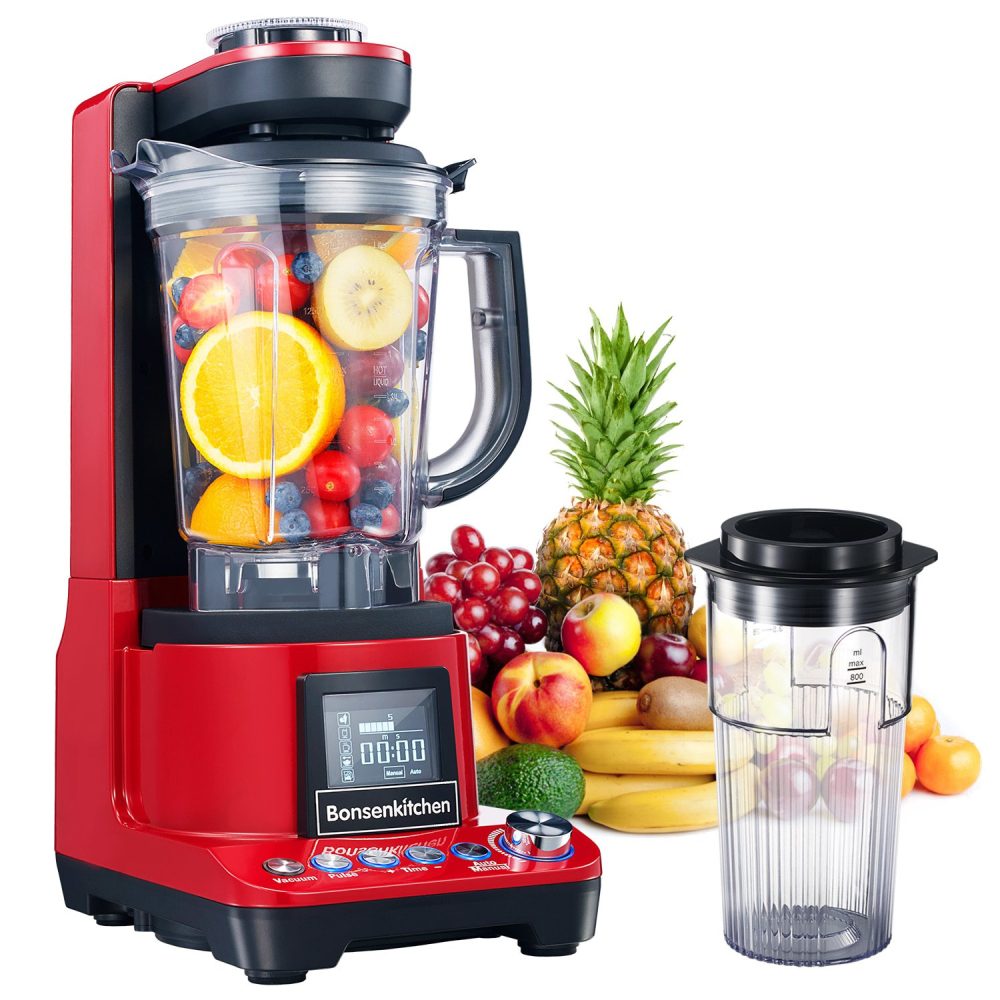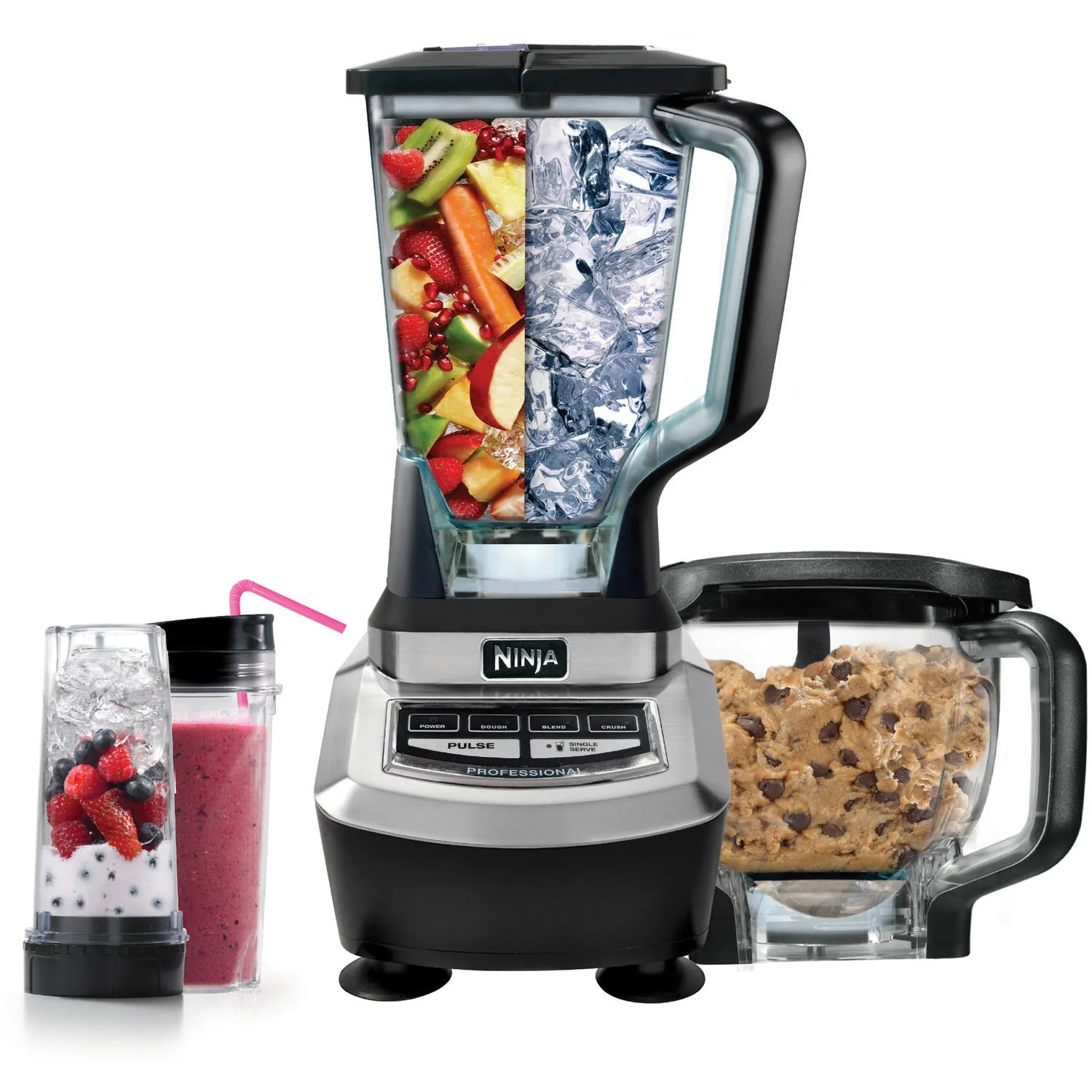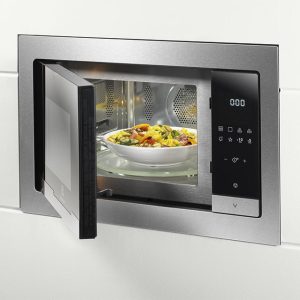
Differences Between Blenders and Food Processors
Understanding the differences between blenders and food processors is critical for any kitchen enthusiast.

The Blade Design and Functionality
Blenders and food processors have distinct blade designs. Blender blades create a vortex for smooth liquids. Food processors have various blade heights, ideal for dry items.
The Role of Liquids in Blending vs. Dry Ingredients in Processing
Blenders need liquids to operate well. They work best for smoothies or soups. Food processors handle dry ingredients, like doughs, with ease.
Container Shape and Size
A blender’s tall pitcher suits liquid blends. Food processors have wider bowls for larger batches and dry work.
When to Use a Blender
Choosing when to use a blender is key for kitchen efficiency.
Creating Smoothies and Liquid-based Mixtures
If you dream of creamy smoothies or velvety soups, reach for a blender. Blenders shine in liquifying fruits, veggies, and ice for drinks. They’re also champs at mingling milkshakes to perfection.
Preparing Batters and Condiments
Whisking pancake batters or mixing up mayo in a blender? Absolutely. These tasks are a breeze with a blender’s whirling blades. Same goes for pesto and other emulsified sauces — blenders handle these well.
Chopping Small Quantities
Got nuts, herbs, or breadcrumbs to chop? A blender can do that in a pinch. It’s no food processor, but for small jobs, it works. Just don’t expect the fine tuning you’d get with specialized attachments.
To sum it up, blenders are ideal for smooth and liquid tasks. They can also chop but don’t have the finer control or versatility of food processors. Whether making a quick salsa or a shake, a blender can be your go-to gadget. Just keep in mind its limitations compared to a food processor.
Limitations of Using a Blender as a Food Processor
While a blender can take on some tasks typically reserved for a food processor, it has its limitations.
Lack of Precision in Chopping
Blenders fall short in precision. Their blades aren’t made for detailed chopping. Thus, results can be uneven, and fine control is hard to achieve. When you need precise cuts, such as for vegetables in a salad or a garnish, a food processor’s sharp, variously sized blades offer the necessary precision which a blender cannot match.
Inability to Handle Thick Mixtures
Thick mixtures like doughs are a challenge for blenders. With their design for liquids, blenders can struggle with dense, heavy mixtures that do not flow easily down towards the blades. A food processor’s wider base and robust motor efficiently handle these tough-to-blend substances.
Limited Food Processing Attachments
Unlike food processors, blenders typically come with one blade type. They lack special attachments for tasks like slicing, shredding, or kneading. Food processors, however, usually include multiple attachments, broadening their versatility in the kitchen. For tasks beyond basic blending, a blender may not suffice. The variety of attachments that come with a food processor enables you to experiment with different textures and food prep techniques that a blender simply can’t offer.
 Exclusive Capabilities of a Food Processor
Exclusive Capabilities of a Food Processor
When it comes to kitchen tasks, some are best left to a food processor. Here’s why.
Handling Firmer Doughs and Batters
A food processor’s strong motor mixes doughs and batters with ease. Think bread, pizza, and cookies. It can work with little to no liquid, unlike blenders. The wide base and robust power make quick work of thick mixtures.
Utilizing Attachments for Slicing and Grating
Need even slices of veggies? Or maybe you’re grating cheese or carrots. A food processor has special blades for these tasks. Attachments slip on easily, cut perfectly, and save you time.
Grinding Meat and Creating Crumbs
Making your own ground meats or bread crumbs? The food processor does it best. Its large blades tear through these tasks. Homemade burgers or a cheesecake base come together in no time.
The Hybrid Solution: Blenders with Food Processor Attachments
In today’s fast-paced world, kitchen convenience is key. This has led to the rise of hybrid appliances that blend the best of both worlds. Blenders with food processor attachments offer a multipurpose solution for those who have limited kitchen space or budget. These multifunctional machines can shift from blending smoothies to chopping veggies with the swap of an attachment.
Overview of Multipurpose Appliances
Multipurpose appliances are becoming increasingly popular in modern kitchens. They save space, reduce clutter, and can be cost-effective compared to purchasing separate units. A quality hybrid appliance typically includes a base motor with various interchangeable attachments. It can perform standard blending functions, like making shakes or purees. With additional attachments, it may also slice, dice, and knead, stepping into the realm of food processors. This versatility makes them an attractive option for many home cooks. However, it’s important to note that while hybrids offer convenience, they may not excel in specialized tasks as dedicated units do. For example, while they can chop vegetables, the texture and uniformity might not match that of a standalone food processor. The choice to opt for a hybrid appliance should be weighed against specific cooking needs and preferences.
Decision Factors for Buyers
When considering whether to use a blender as a food processor, buyers should evaluate several factors.
Assessing Kitchen Needs and Cooking Habits
Your kitchen acts and habits can signal the right choice. If you often make smoothies or liquid recipes, a blender will likely suffice. For tasks requiring fine chopping or dough making, a food processor is better suited. Also, consider how frequently you cook and the variety of dishes you prepare.
Comparing Appliance Costs and Space
Cost and kitchen space are crucial. Blenders generally cost less and take up less space. A food processor, while typically more expensive, offers more functions. Weigh if the additional features justify the investment. If space is limited, multifunctional appliances might be a smart compromise.
Consider these factors carefully to make a decision that best fits your kitchen and cooking style.
 Recommendations and Alternatives
Recommendations and Alternatives
When choosing between a blender and a food processor, think about what you’ll make most often.
Selecting the Right Appliance for Specific Tasks
If you’re planning on making lots of smoothies or liquid recipes, a blender should be your go-to appliance. Its design is optimal for creamy textures and smooth mixes. However, if you’re looking to prepare dough or need precise slicing and grating, a food processor’s functionality outshines a blender. For bakers and those who enjoy making everything from scratch, a food processor is invaluable. In particular, consider:
- A blender for drinks, soups, and batters.
- A food processor for dough, slicing, and shredding tasks.
Choose based on the tasks you’ll perform the most. It’s about finding the right fit for your kitchen activities.
Exploring Blender and Food Processor Combos
For those tight on space or not wanting to invest in two separate appliances, a combo unit might be the solution. Some blenders come with food processor attachments. They are good for basic food processing tasks. However, they may not match the performance of a standalone food processor. When exploring combos, look for:
- Powerful motors.
- Various attachments.
- Good reviews on performance.
Remember, while these appliances can do both tasks, they excel in blending over processing. Yet, for casual cooks, they can be a practical and space-saving choice. Before buying, consider how much and what type of cooking you do. This will guide you to the best appliance for your needs.





